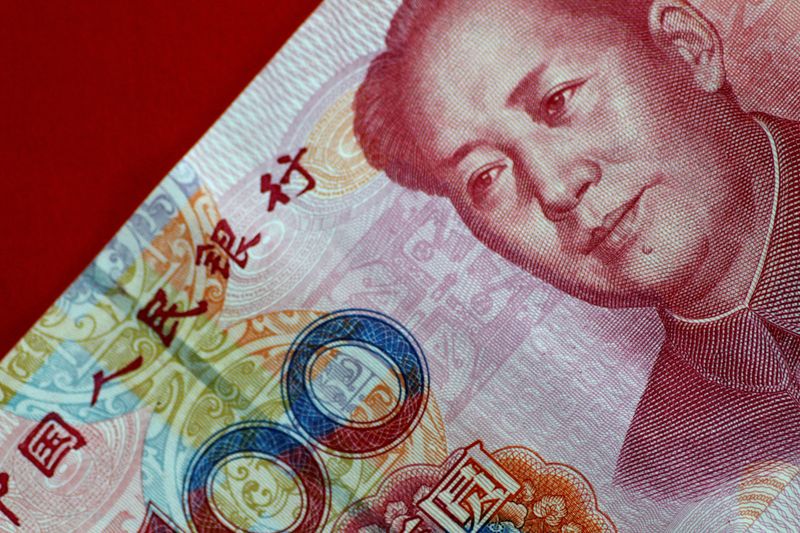BEIJING (Reuters) - China's new yuan loans likely surged in January from the previous month as the central bank moved to shore up a patchy recovery in the world's second-largest economy.
Chinese lenders tend to front-load loans at the beginning of the year to get higher-quality customers and win market share.
Banks are estimated to have issued 4.50 trillion yuan ($626.02 billion) in net new yuan loans last month, more than tripling the 1.17 trillion yuan in December, according to the median estimate in the survey of 24 economists.
That would be lower than the record 4.9 trillion yuan issued the same month a year earlier.
"Banks likely continued to offer credit support for the real economy and be willing to issue bank loans as fast and early as possible to secure more revenue, although the PBOC called in Q4 last year for a 'smoother' pace of credit growth in early 2024," analysts at UBS said in a note.
"Meanwhile, continued LGFV (local government financing vehicle) debt swap using the previous issuance of special refinancing local government bonds in 2023 may have reduced some existing bank loans, corporate bonds and shadow credit."
The People's Bank of China (PBOC) usually releases data on bank loans, money supply and total social finance (TSF) between 10-15 of each month, but a central bank official said January data would be delayed by the Lunar New Year holiday from Feb. 10-17.
China's new bank lending hit a record 22.75 trillion yuan in 2023, up from 21.31 trillion yuan in 2022 - the previous record.
The world's second-largest economy grew 5.2% in 2023, slightly more than the official target, but the recovery was far shakier than many analysts and investors expected, with a deepening property crisis, mounting deflationary risks and tepid demand casting a pall over the outlook for this year.
To prop up faltering growth, the central bank cut the reserve requirement ratio (RRR) for banks by 50-basis points on Feb. 5, the biggest in two years, releasing 1 trillion yuan in long-term liquidity.
Annual outstanding yuan loans were expected to grow 10.4% for January, slowing from 10.6% in December, the poll showed. Broad M2 money supply growth in January was seen at 9.3%, compared with 9.7% in December.
China's local governments issued a net 3.96 trillion yuan in special bonds in 2023, exceeding the annual quota, to help spur investment and support the economy, finance ministry data showed.
Any acceleration in government bond issuance could help boost TSF, a broad measure of credit and liquidity. Outstanding TSF was 9.5% higher at the end-December, compared with 9.4% at end-November.

In January, TSF is expected to rise to 5.55 trillion yuan, up from 1.94 trillion yuan in December.
($1 = 7.1883 Chinese yuan)